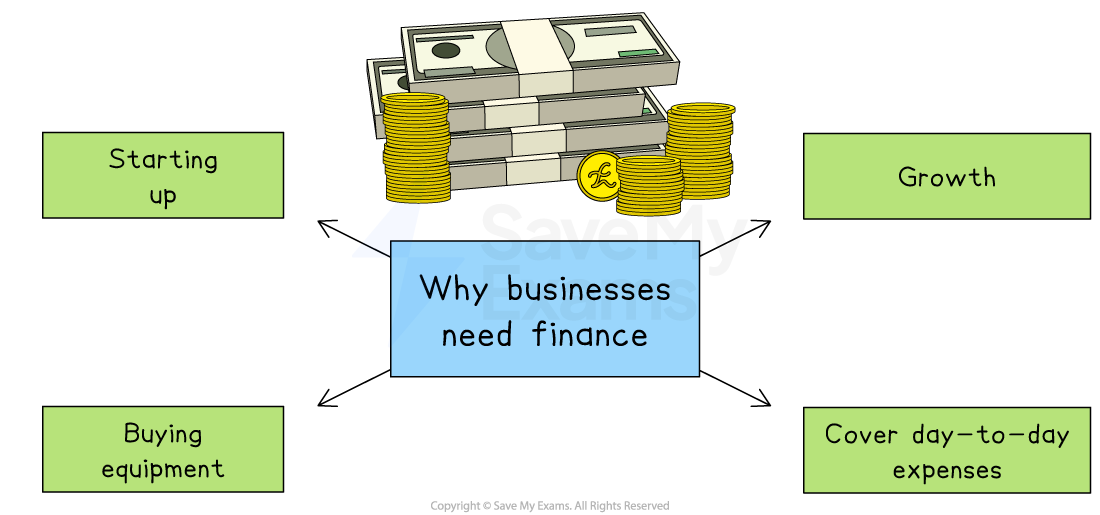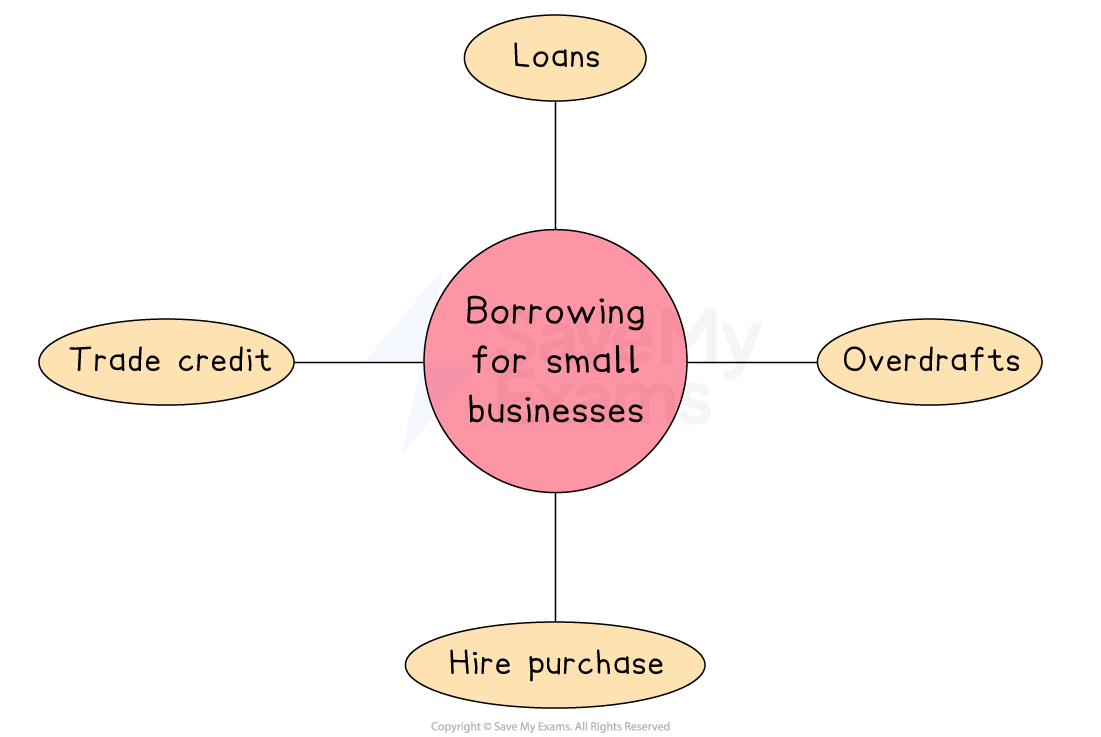Sources of Finance for Small Businesses (SQA National 5 Business Management): Revision Note
Exam code: X810 75
Introduction to sources of finance
All businesses need finance to get started, allow them to grow, fund capital investments and their continuing activity

Start-up capital
Is the finance needed by a new business to pay for fixed assets and current assets before it can begin trading
A business usually estimates the amount of start-up capital they need in the business plan
Many small new businesses will get a start-up loan to cover these initial costs
Funds for growth
As a business grows more finance may be needed for capital expenditure
It may require more equipment, buildings, IT equipment or vehicles, which will allow the business to increase output
If a business wants to grow by developing a new product, it will need to spend large amounts of capital on research and development (R&D)
Owner's capital
Personal savings are a key source of funds when a business starts up
Owners may introduce their savings or another lump sum, e.g. money received following a redundancy
Owners may invest more as the business grows or if there is a specific need, e.g. a short-term cash flow problem
Taking on a new partner means new owner's capital is introduced into a small business
Evaluating the use of owner's capital
Advantages | Disadvantages |
|---|---|
|
|
Where do small businesses secure finance from?
Many small businesses rely on short-term borrowing methods that operate internally within their banking arrangements, such as overdrafts or loans secured against business assets

1. Bank overdraft
An overdraft allows a business to withdraw more money than is in its account, up to an agreed limit
Advantages | Disadvantages |
|---|---|
|
|
2. Bank loan
A bank loan provides a fixed amount of money that is repaid with interest over a set period
Advantages | Disadvantages |
|---|---|
|
|
3. Trade credit
Trade credit is when suppliers allow a business to buy goods now and pay later, usually within 30–60 days
Advantages | Disadvantages |
|---|---|
Helps improve short-term cash flow. | Missed payments may damage supplier relationships. |
No interest if paid within the agreed period. | May lose early payment discounts. |
Allows businesses to sell goods before payment is due. | Usually only available to trusted or established firms. |
4. Hire purchase
Hire purchase allows a business to buy an asset and pay for it over time, while using it immediately
Advantages | Disadvantages |
|---|---|
|
|
Examiner Tips and Tricks
Students often overlook why small businesses struggle to raise funds. Banks may see them as risky; they lack collateral, and investors prefer larger firms. Examiners reward answers that explain these barriers rather than simply listing unavailable finance options

Unlock more, it's free!
Did this page help you?